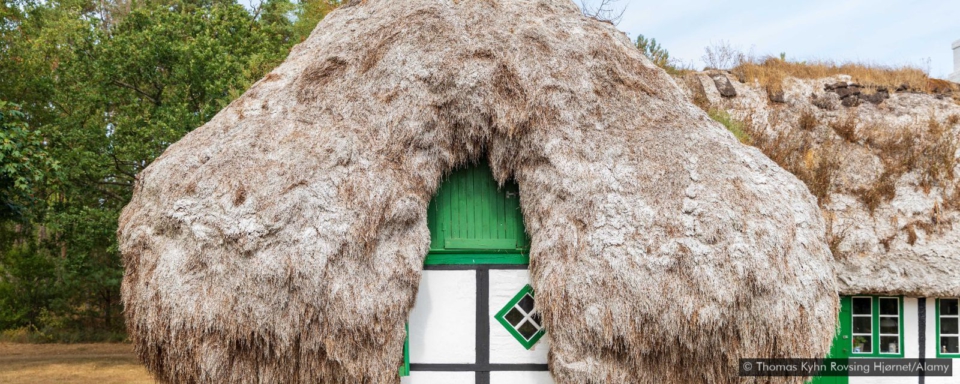Most summer days on the Danish island of Læsø, you’ll find Henning Johansen at work. A native islander, Johansen is a thatcher. But on Læsø, a thatcher’s job is unlike anywhere else.
Nineteen kilometres off the north-east coast of Jutland, the island appears in Norse mythology as the home of the giant Ægir, and, surrounded by shipwrecks, is mentioned throughout Danish naval history. Læsø’s most unique characteristic, however, is its houses, which are thatched with thick, heavy bundles of silvery seaweed.
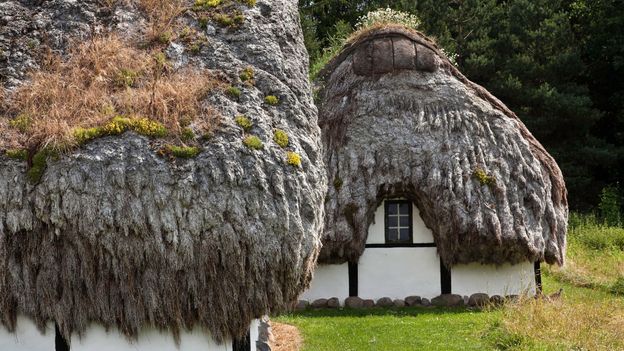
Seaweed thatching began on Læsø in the 17th Century and is largely unique to the island, though seaweed roofs were later reported to have been seen on Scotland’s Orkney Islands. Læsø, which had a thriving saltworks industry, had been deforested – trees were burned to feed the salt kilns – so islanders needed to find an alternative roofing material. The island itself has scant resources and, consisting largely of mudflats and sandbanks, is difficult to cultivate, so instead residents looked to the sea.
"People are always surprised because they're expecting it to smell or be slimy"
Driftwood was salvaged from shipwrecks to be used as timber and abundant eelgrass (zostera marina) was dragged from the shore and harvested for the roofs. By the beginning of the 20th Century, most of the island’s homes were roofed with seaweed. But, after a fungal disease wiped out much of the eelgrass in the 1920s, knowledge of the technique slowly vanished. Today, only 36 seaweed-roofed houses remain on the 1,800-person island.
Since 2012, Johansen has been reviving the technique as he replaces the roofs, the first in a generation to do so. “It's one of the greatest things in Læsø’s history, so it’s very important for the island,” he told me by phone from a roof he was working on. “It was women's work,” he added, explaining that since the male islanders were often out at sea, the women were left to look after the farms and houses. “They were alone on this island and taking care of themselves. They found a way to make these roofs, which is not seen elsewhere in the world. So, of course we are very proud of the heritage.”

Around 40 to 50 women would work on the roofs together. They would gather the seaweed after autumn storms, then spread it out on a field to dry for around six months, which would remove microalgae and make it rot resistant. When building began, they’d treat the eelgrass almost as if it were wool by twisting it into large vasks (ropes) then tying them to the rafters to serve as the base. More seaweed would be piled on top and weighed down with peat: the average roof was more than 1m thick and weighed 35 to 40 tonnes. The women would take chairs up onto the completed roofs, where they would sit and scan the treeless horizon for shipwrecks (and possible salvaging opportunities) and move around, even dance, on the seaweed to compress it.
They could make a roof in one day, said Johansen. For his team of five local thatchers, it takes around 21. “Because I don’t have 50 women.”
But it’s not only for the sake of heritage that Johansen is reviving seaweed thatching. “[Eelgrass] is a very interesting material,” he said, “because it won't burn; there’s so much salt in the straw.”

While eelgrass is commonly referred to as “seaweed”, it is actually a type of seagrass, which has long leaves and can grow up to 2m in length. It’s found all around the world, though largely in the northern hemisphere. Not only is eelgrass naturally fire-, rot- and pest-resistant, it also absorbs CO2, and as it doesn’t require heat to produce, is carbon neutral when harvested and used locally.
Eelgrass becomes fully waterproof after about a year and has insulation properties comparable to those of mineral wool, a dense, fibrous material made from molten glass, stone or industrial waste. A roof can last hundreds of years – one of island’s remaining seaweed roofs dates more than 300 years – for comparison, a concrete tile roof typically lasts around 50.
This combination of sustainability and heritage caught the eye of Copenhagen-based American architect Kathryn Larsen, who is currently researching how Læsø’s traditional seaweed thatching could be updated into a sustainable contemporary building material around the world.
While studying at KEA – Copenhagen School of Design and Technology, Larsen focused her thesis on Læsø’s seaweed roofs, a subject with few English-language resources. “It became this big mystery for me because almost all the information was in Danish,” she said. “I was really consumed by that for a few years: I would learn more Danish and then I would learn more about this and go back and forth. It became a real obsession.”
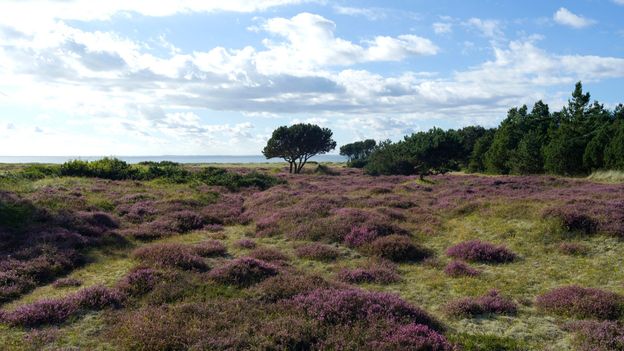
After discovering that her school had a supply of eelgrass, which it had received from local seaweed farmers, Larsen started experimenting “for fun”. She developed prefabricated panels to be used on facades and roofs to act as supplementary, sustainable insulation and installed the panels on the roof of her school to study how eelgrass reacts over time to the elements.
"In 50 years all the knowledge about eelgrass disappeared," Larsen said.
She soon realised, however, that she needed to create a more public installation. “A lot of people were really sceptical,” she said about the use of eelgrass. In late 2019 she started work on The Seaweed Pavilion, an installation incorporating her panels into a wooden structure in a courtyard at KEA. “I wanted people to be able to sit underneath it and experience this material in person. People are always surprised because they're expecting it to smell or be slimy, so by having a more positive interaction with it, I was hoping to change that perception.”
“What I really wanted to drive home was that this is a really good form of natural installation,” she said, explaining that with this type of installation you don't need a vapour barrier, which is not air permeable. “You can use a lot of it and air will go through your building and not get blocked, so the whole construction will breathe and the air quality will be a lot higher.”
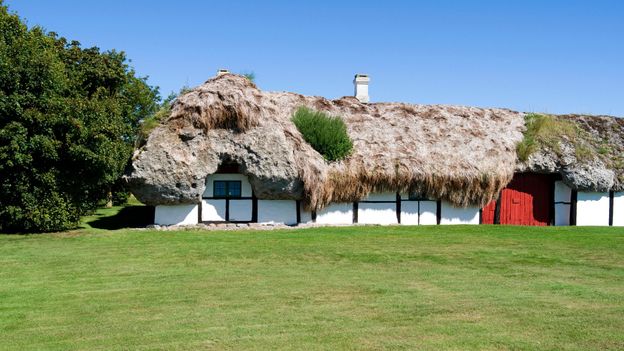
Larsen wants to change the way the building industry looks at older techniques, which were “not only better for our environment, by using natural renewable resources, but were also creating buildings that were a lot healthier for us. Basically, we figured it out, [then] we lost all this knowledge and [now] we’re building ourselves into a bigger hole where buildings are getting worse and worse in air quality.”
Because eelgrass grows worldwide, she sees a huge global potential for it to be used as a sustainable building material, “as long as it’s harvested and used locally”.
The eelgrass that she used in The Seaweed Pavilion was harvested and prepared by Kurt Schierup, who uses the same farming and drying technique as those of Læsø’s women, albeit with a machine rather than by hand. Although he established his eelgrass harvesting business, Møn Tang, in 2016, Schierup has been doing this work since his childhood in the 1950s on the Danish island of Tærø, when eelgrass was exported internationally for use in upholstery, insulation and mattresses. It’s a nugget of history that underscores how common a material eelgrass used to be.
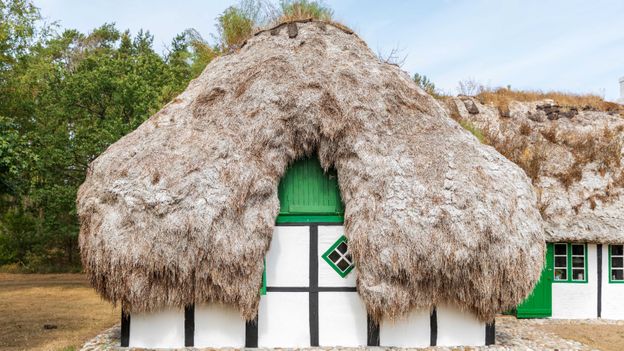
“When I was a kid, 50 years ago,” said Johansen, “everybody was sleeping on eelgrass in Denmark. But then the plastic came, very cheap. So, in 50 years all the knowledge about eelgrass disappeared”.
On Læsø, Johansen still has 10 more roofs to replace. It’s been a long project, but one that he says he doesn’t want to finish “because it's much easier to tell you the history when you come and see me repair old houses”. Visitors to Læsø are invited to watch him at work on weekdays during the summer where they can see first-hand “the way it works, the material, and how interesting it is”.
Eelgrass is part of the world’s heritage, he said. “You can come to Læsø and I can show you your own history from your country” because it was once commonly used around the world – everywhere from the Dutch Wadden Sea where it was used for building sea walls to New England where homes were insulated with Cabot’s Quilt, a thermal and sound insulator made of dried eelgrass.
“It has a big history, which was very quickly forgotten and now I'm starting to tell it again. It's very easy to tell when you stand beside a very old roof, looking at it, and people say, ‘what a funny material’.”
Latest Stories
-
I want to focus more on my education – Chidimma Adetshina quits pageantry
4 hours -
Priest replaced after Sabrina Carpenter shoots music video in his church
4 hours -
Duct-taped banana artwork sells for $6.2m in NYC
4 hours -
Arrest warrants issued for Netanyahu, Gallant and Hamas commander over alleged war crimes
4 hours -
Actors Jonathan Majors and Meagan Good are engaged
4 hours -
Expired rice saga: A ‘best before date’ can be extended – Food and Agriculture Engineer
5 hours -
Why I rejected Range Rover gift from a man – Tiwa Savage
5 hours -
KNUST Engineering College honours Telecel Ghana CEO at Alumni Excellence Awards
5 hours -
Postecoglou backs Bentancur appeal after ‘mistake’
5 hours -
#Manifesto debate: NDC to enact and pass National Climate Law – Prof Klutse
5 hours -
‘Everything a manager could wish for’ – Guardiola signs new deal
6 hours -
TEWU suspends strike after NLC directive, urges swift resolution of grievances
6 hours -
Netflix debuts Grain Media’s explosive film
6 hours -
‘Expired’ rice scandal: FDA is complicit; top officials must be fired – Ablakwa
7 hours -
#TheManifestoDebate: We’ll provide potable water, expand water distribution network – NDC
7 hours

